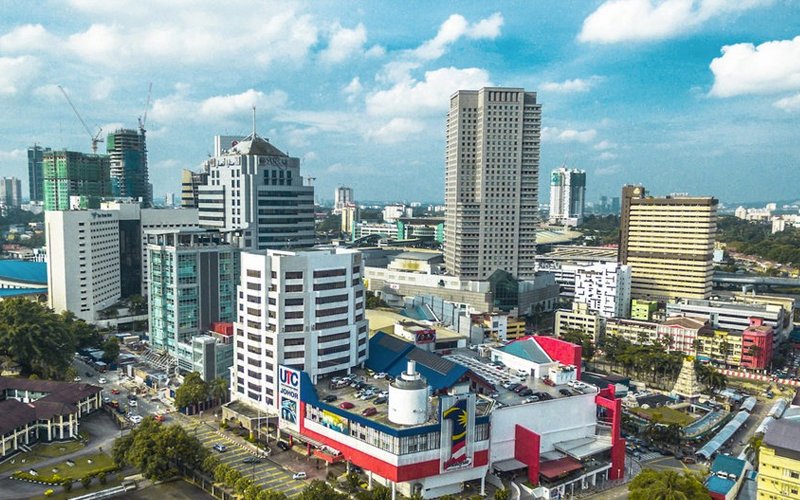
The issue of unsold housing units and property overhang in Johor is a long-standing one, which requires intervention if it’s to be resolved.
This situation has existed since 2015 and, according to the National Property Information Centre’s (NAPIC) latest transaction data for the first quarter (1Q2020), Johor has the highest number of unsold completed properties in the country at 5,468 units, making up 18.4% of the total overhang.
In 1Q2019, Johor had 6,057 unsold units, of which 1,974 were condominiums or apartments and 2,160 two- or three-storey terraced houses.
What effect will this glut have on the state and what can be done to resolve it?
The Johor market has always been plagued with unsold units and property overhang, but it remains a robust market with decent price appreciation over the years, Johor Bahru-based consulting firm, KGV International Property Consultants executive director Samuel Tan told Property Advisor.
“To alleviate the problem, it would be best to reset the selling prices of the unsold properties to reflect the current market.”
Even then, he said, it would be challenging as effective demand may have been compromised by the Covid-19 pandemic resulting in reduced interest in investing, financing difficulties and a host of related issues.
“The market somehow adapts itself during a slow period with products that are within the reach of buyers. A better approach is to be preventive by making sure the products offered are acceptable in terms of type, pricing and location,” he said.
He noted that the property overhang is a case of indigestion due to a mismatch of supply and demand, particularly serviced apartments.
“The overhang numbers are down but the unsold stock will require some time and a lot of effort to clear. However, the landed residential sector is still resilient, if the price is right.”
Cheston International assistant manager David Ng Wei Ming said, at this juncture, nothing much can be done to overcome the problem of unsold units and the property overhang in Johor.
“Purchasing power is mainly driven by overall economic conditions as well as market sentiments. Even the government is encouraging the market by introducing several initiatives such as the Home Ownership Campaign where buyers enjoy stamp duty exemptions and Real Property Gains Tax waivers.
“Bank Negara Malaysia is revising the overnight policy rate to stimulate the property market while the Ministry of Finance has also announced a reduction of the minimum purchasing price of properties for foreigners to RM600,000 from the previous RM1 million,” Ng said.
In fact, he said, the unresolved issue has been caused by foreign and local developers focusing on high-rise properties.
“Out of all the overhang units, some 85% are high-rise condos and small office/home offices. The supply gush, as we called it, for high-rise properties started in 2012 to 2013 during the property boom, and purchasers were mostly investment-oriented.”
Ng said property prices in Johor rose to an astonishingly high level, even rivalling the prime areas of Kuala Lumpur (RM600,000 onwards), which was when the mismatch between price tag and affordability for Malaysians began.
“It worsened due to a lack of market sentiment, confidence and lending policies becoming more stringent. In layman’s terms, houses were not affordable anymore and banks were not lending as they used to.
“Foreign buyers are still the main target for the absorption of this unsold stock, but it is also dependent on the current market sentiment, government policy, political and economic stability as well as the strength of the currency and other factors,” Ng said, adding that market values seem to have softened and are expected to be much lower for the rest of this year.
According to KGV International’s Tan, in the next couple of years, the market will be more local-centric. “Most homebuyers will be buying for personal use with a small proportion for investment. The traditional favourites for the locals are in the Tebrau, Skudai/Tampoi and Iskandar Puteri areas.”
He said the current demand is biased towards new two-storey terraced houses priced at RM600,000 to RM700,000 in prime suburbs.
For houses in the secondary suburbs and in towns, the price range is estimated at RM400,000 to RM500,000.
Is RTS a game-changer?
Following the recent announcement of the commencement of the RM10 billion Johor Bahru-Singapore Rapid Transit System (RTS) project early next year, Tan said the project will create more interest from Singaporeans and Malaysians working in Singapore and vice versa.
“The RTS may not bring property investors to Johor Bharu, but the confidence engendered by this project may cause investors to relook into JB’s property market.
“With more people using the RTS, traffic volume at the causeway will be reduced. This will encourage people to travel in to patronise businesses here and will have a positive spin-off effect on the property market.”
During the construction period over the next six years, Tan said some 1,500 new jobs will be created.
“Many other industries such as building materials and professional services will also benefit. I hope the bus rapid transit system will be well-integrated with the RTS. In fact, this is probably the key to the eventual success of the project.”
Ng agrees that the RTS project is a small light at the end of the tunnel for Johor and will certainly boost the property market as well as spending at the local business level. “But how soon the project will be completed is still the big question.”

